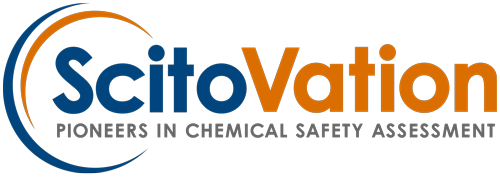The next installment of our webinar series is with Alexandra Long, PhD, from Health Canada. Alexandra will discuss NAMs as they relate to genetic toxicity. Dr. Long will provide an overview of an integrated, multi-endpoint, higher throughput, in vitro NAM platform, termed GeneTox21, led by Health Canada scientists, for the assessment of chemically induced genetic toxicity. What you’ll learn:
- The value of higher throughput Genetox NAMs.
- Overview of the GeneTox21 project.
- Results of a case where IVIVE was applied to genetic toxicity data to derive PODs that are protective of human health.
All registered participants will receive access to the webinar recording. We look forward to hosting you!
Click here to Watch the recording!About our Speaker:
Dr. Alexandra Long:
Dr. Alexandra Long completed her PhD in Biology (Specialisation: Chemical and Environmental Toxicology) from the University of Ottawa. Her PhD research focused on the genetic toxicity of complex mixtures of polycyclic aromatic hydrocarbons. She completed a NSERC Postdoctoral Fellowship at the University of Toronto in the Department of Pharmacology & Toxicology. Alexandra previously worked for over a decade as a Research Biologist in a Genetic Toxicology lab at Health Canada, where she was the project manager of the GeneTox21 project. Dr. Long is currently a Scientific Evaluator in the Emerging Approaches Unit of a regulatory bureau within Health Canada, where her work focuses on the evaluation of new approach methodologies (NAMs) and the integration of NAMs into the process of chemical risk assessment.
Abstract:
New Approach Methodologies (NAMs) can be defined as any technology, methodology, or approach that can be used to replace, reduce, or refine animal testing and allow for more rapid or effective assessment of chemicals. NAMs can be used in an integrated or tiered testing strategy to improve our mechanistic understanding of adverse human health effects, can provide hazard information for chemical screening and prioritization; and moreover, can contribute to the weight-of-evidence in chemical risk assessments. Genetic toxicity assessment evaluates the ability to damage genetic material, and is a critical component of chemical risk assessment as genetic damage is linked to numerous human diseases. Most of the conventional tests currently used to assess genetic toxicity are laborious, time-consuming, or require animal testing. Moreover, genotoxicity assessments have traditionally been restricted to dichotomous hazard identification; in contrast, most other toxicological endpoints use quantitative dose-response analyses for Point-of-Departure (POD) determination. Higher throughput genetox NAMs have been developed to support the global shift towards more efficient, animal-free chemical safety assessments. Data derived from these genetox NAMs can be analysed using in vitro-to-in vivo extrapolation (IVIVE) models to estimate robust PODs for genotoxicity endpoints and modernize the assessment of genotoxic substances. Health Canada scientists have developed an integrated, multi-endpoint, higher throughput, in vitro NAM platform, termed GeneTox21, for the assessment of chemically induced genetic toxicity. In this talk, I will provide an overview of the GeneTox21 project, as well as describe the results of a case where IVIVE was applied to genetic toxicity data to derive PODs that are protective of human health.
About ScitoVation:
ScitoVation helps clients assess chemical compound safety using innovative science, next-generation technology, and professional expertise. ScitoVation is known for partnership, flexibility, and proven success in its work to develop safer and more effective pharmaceuticals, food ingredients, agricultural chemicals, commodity chemicals and consumer products. A spin-off of the former The CIIT and The Hammer Institutes for Chemical & Drug Safety Sciences, ScitoVation is an industry leader of New Approach Methods (NAMS) for chemical/drug discovery & development in the rapidly evolving global regulatory landscape.
